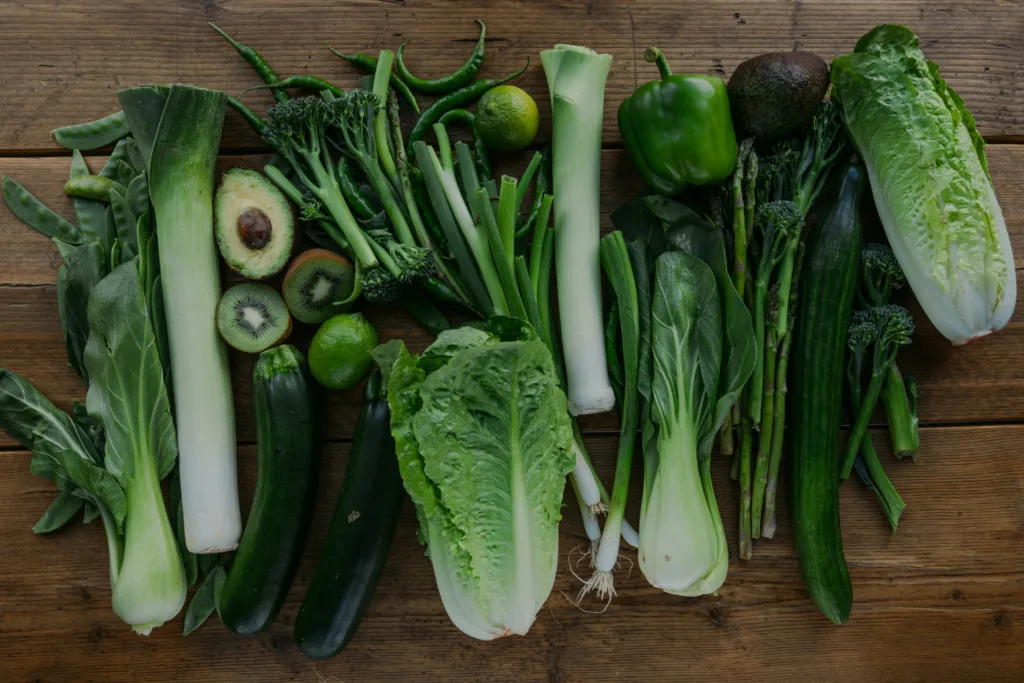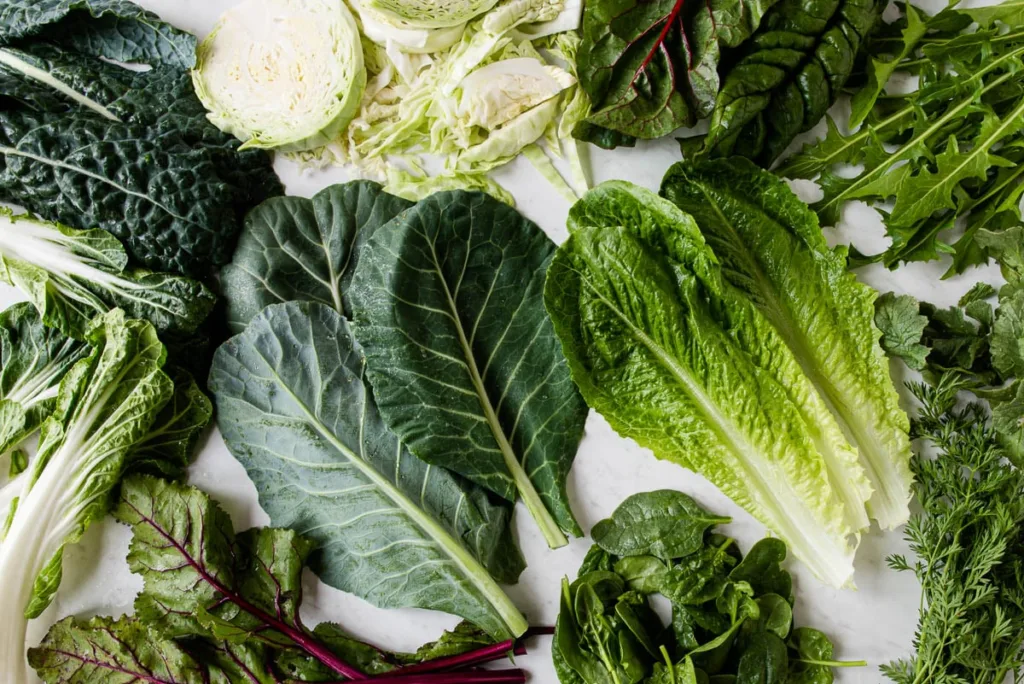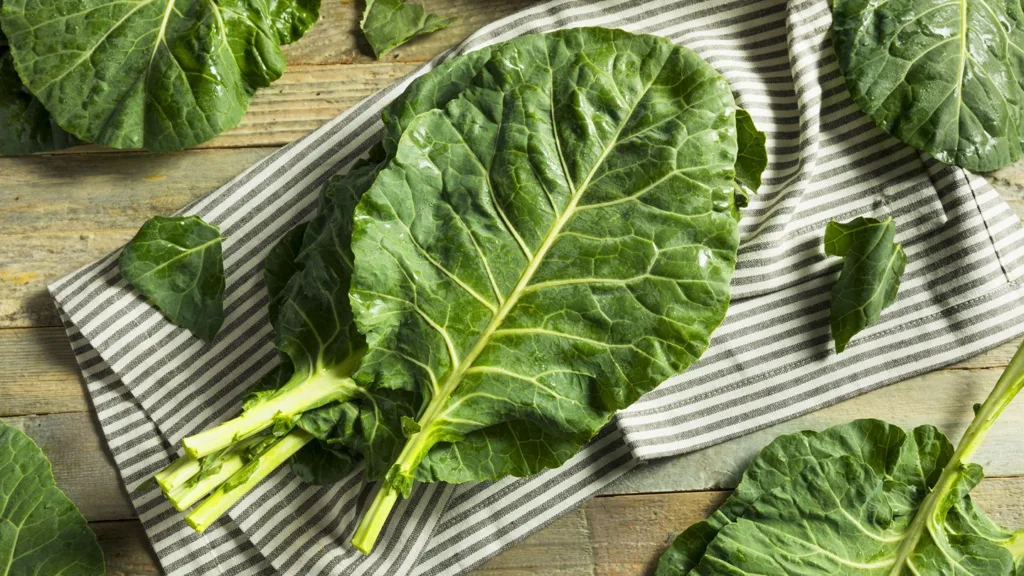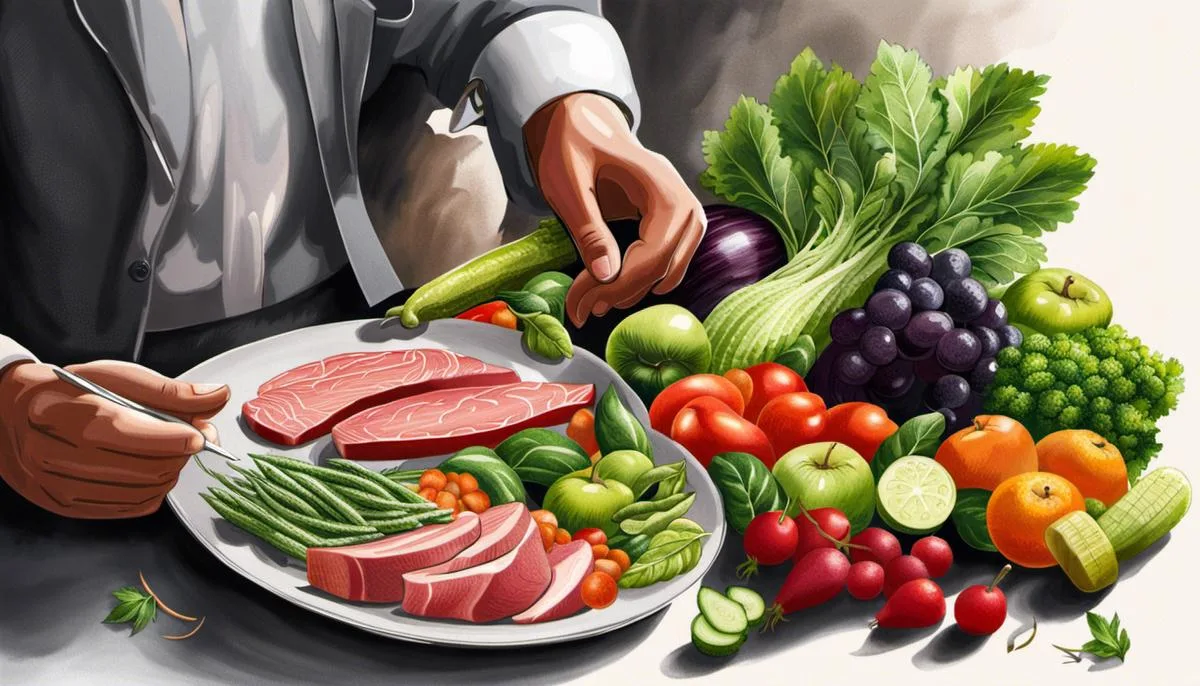Leafy greens like spinach, kale, and romaine have long been praised for their nutritional value, yet only recently have they started receiving attention for their powerful weight loss benefits. With the rise of the green smoothie and big salad movement, leafy greens are poised to become the next go-to staple in health and fitness. If you’re looking to unlock your weight loss potential in a sustainable, wholesome way, it’s time to join the green lifestyle revolution.
In this in-depth blog post, we’ll explore what makes leafy greens nutritional powerhouses, dive into the science behind how they ignite weight loss, and give you tips to enjoy more greens in your daily diet. We’ll also share inspirational success stories that showcase the real-world impact leafy greens have had on weight loss transformation journeys. Once you understand the tremendous benefits greens provide, you’ll be eager to embrace them in your diet and lifestyle. Let’s get started exploring how leafy greens can help you achieve lasting weight loss success!

The Nutritional Powerhouse: Greens at a Glance
All leafy green vegetables provide amazing nutrition, but some varieties stand out as rockstars. Here are some top picks to focus on working into your regular rotation:
Spinach
Popeye knew what he was talking about! Spinach is one of the most nutritionally dense leafy greens you can eat. Just one cup of raw spinach contains over 20% of your daily value for vitamin A, vitamin K, folate, manganese, magnesium, iron and vitamin C. It’s also a good source of protein, calcium, potassium and vitamin E.
Spinach is especially high in vitamin K, which plays essential roles in bone health and blood clotting. The bounty of antioxidant vitamins A and C also make spinach excel at fighting inflammation and oxidation, which can contribute to disease over time. What’s not to love about this green superhero?
Kale
Kale deserves its superfood status, providing a bonanza of vitamins, minerals and disease-fighting compounds. Per calorie, kale provides more vitamin C than an orange and more calcium than milk. It’s one of the best plant sources of vitamin A, which supports immune function and vision.
Kale also contains glucosinolates, which are phytochemicals converted into detoxification supporters and inflammation fighters in the body. The vibrant green color indicates its high chlorophyll content. Kale provides a unique blend of antioxidants to boost your overall health!
Swiss Chard
The colorful stems and green leaves of Swiss chard make it a visual standout. Chard provides a unique phytonutrient combination of syringic acid, vitamin E, and kaempferol, all powerful antioxidants. It’s also an incredibly rich source of vitamin K, providing over 1000% of your daily needs in just one cooked cup!
Vitamin K promotes bone building by improving calcium absorption and reducing urinary excretion of calcium. The magnesium in chard also helps maintain strong bones. If you’re looking to keep your bones strong, Swiss chard deserves regular rotation.
Romaine Lettuce
Often overlooked as a boring diet food, romaine lettuce packs a huge nutritional punch. Just a 2-cup serving of shredded romaine provides over 80% of your daily vitamin A. It’s also rich in vitamin K, vitamin C, folate and manganese. Romaine also boasts a huge amount of beta-carotene, a carotenoid that converts to vitamin A in the body.
Romaine has significant amounts of chlorogenic acid, an antioxidant that may lower blood sugar levels and support heart health. When seeking maximum nutrition from your lettuce wraps or salads, choose robust romaine.
Collard Greens
A staple vegetable in Southern U.S. cuisine, collard greens deserve more national appreciation! They provide incredible amounts of vitamins A, C, and K, meeting or exceeding your daily needs. The combination of these fat-soluble vitamins provides potent anti-inflammatory effects.
Collards also contain glucosinolates which transform into detox boosters in the body. The rich green color signifies abundance of antioxidants and the power to fight free radical damage. Want an easy way to boost your vitamin intake? Throw some collard greens in your next stir fry or soup!
In addition to vitamins and minerals, all leafy greens provide fiber, a nutrient sorely lacking in the average American diet. Fiber promotes weight loss and gut health by slowing digestion, providing bulk and promoting satiety after meals. Leafy greens are one of the easiest ways to add more of this beneficial fiber into your daily nutrition routine.
With their stellar line-up of vitamins, minerals and fiber, enjoying more leafy greens is among the best ways to maximize the nutritional bang for your caloric buck. When it comes to unlocking your body’s true weight loss and health potential, few foods can compete with the mighty green leafy vegetables!

The Science Behind Weight Loss with Leafy Greens
Leafy green vegetables promote weight loss through a trifecta of mechanisms: optimizing metabolism through their abundance of nutrients, enhancing satiety and appetite control through fiber and water content, and regulating blood sugar spikes due to their low glycemic load. Let’s explore the science behind each of these effects:
Metabolism Boosting
Weight loss is dependent on burning more calories than you consume. Boosting your metabolic rate allows your body to burn calories more efficiently, creating a calorie deficit. Leafy greens are loaded with nutrients involved in energy production pathways, helping rev up your metabolic engine.
For example, magnesium activates over 300 enzymes involved in protein synthesis and energy production. Greens like spinach and Swiss chard are excellent sources of metabolism-boosting magnesium. Leafy greens also provide iron critical for oxygen transport and B-vitamins key for fat and carbohydrate metabolism.
The nitrates found in leafy greens may also improve metabolic function. Nitrates help optimize mitochondria, your cells’ tiny energy factories, leading to better fat burning and oxygen efficiency. By consuming more metabolism-supporting nutrients, leafy greens help your body maximize its innate calorie and fat burning potential.
Appetite Regulation
Leafy greens promote weight loss not just through burning calories, but by reducing overall calories consumed. How? Their high fiber and water volume provide bulk that takes up space in your stomach and intestines, triggering stretch receptors that signal satiety to your brain.
This feeling of fullness and satisfaction makes you less likely to overeat. Leafy greens also contain a special type of fiber called thylakoid fibers. These fibers slow down digestion, leading to prolonged fullness between meals. Slower emptying and transit through the digestive tract further enhances their appetite regulating effects.
Blood Sugar Control
Leafy greens have a low glycemic load, meaning the carbohydrates they contain do not lead to big spikes in blood sugar levels. Preventing blood sugar spikes is key to reducing fat storage, controlling cravings and limiting overeating.
The magnesium in leafy greens also helps regulate healthy blood sugar levels already within normal range. Greens provide antioxidants like quercetin that are particularly beneficial for blood sugar control. Enjoying leafy greens with meals may assist with stabilizing blood sugar response.
By optimizing metabolic function, enhancing satiety signals and regulating healthy blood sugar levels, leafy greens target several physiological mechanisms involved in weight loss. Their wide array of vitamins, minerals, antioxidants and fibers make them a true nutritional powerhouse for losing weight safely and sustainably.

Leafy Greens vs. Other Foods: A Comparative Analysis
To truly appreciate the weight loss benefits of leafy greens, let’s compare them side-by-side with some other common food options:
Caloric Density Comparison
Caloric density describes the number of calories (energy) in a given volume or weight of food. Foods with a high caloric density provide a lot of calories in a small serving. Low-calorie dense foods provide minimal calories per serving. Why does this matter for weight loss?
Leafy greens have an extremely low caloric density. You can eat a very large portion, yet still only take in minimal calories. For example, one cup of raw spinach only contains 7 calories! Contrast this with many other foods:
- 1 cup raw carrots: 45 calories
- 1 cup white pasta: 220 calories
- 1 cup strawberries: 50 calories
- 1 cup kidney beans: 225 calories
As you can see, leafy greens provide an enormous serving size and food volume compared to other foods with the same caloric value. This means you can fill up your plate and feel fully satisfied, while still supporting a calorie deficit. This makes leafy greens an invaluable addition to any weight loss diet.
Nutrient Density Comparison
Calories aren’t everything – we also need to look at the amount of beneficial nutrients a food provides. Here again, leafy greens knock it out of the nutritional park!
Though low-calorie, leafy greens contain megadoses of vitamins, minerals, antioxidants and fiber that our bodies need. For example, one cup of raw spinach contains over 3 times the vitamin K of a medium banana, and 10 times the vitamin A of 1 cup of blueberries.
Yet spinach only contains 7 calories per cup compared to banana’s 105 calories and blueberries’ 80 calories. Clearly leafy greens provide maximum nutritional value for minimal caloric cost. Adding more greens lets you supplement your diet with disease-fighting nutrients linked to better health and an optimized metabolism.
Satiety Factor
Not all foods are equally satisfying. Some provide lasting fullness while others leave your stomach grumbling an hour later. Leafy greens score high when it comes to satiety – the feeling of fullness after eating. With their high fiber, high volume, and low calorie content, leafy greens are one of the most satiating foods available.
In studies comparing different foods, soup and salad combinations containing leafy greens like lettuce and spinach scored the highest on satiety scales. Participants reported feeling fuller and more satisfied compared to many other commonly consumed foods. If you’re looking to stay full between meals, you can’t go wrong packing your plate with nutritious greens!
When you compare leafy greens to other food options, they consistently come out on top for supporting weight loss efforts. With their stellar nutrition, low caloric density, high satiety and immense volume, it’s easy to see why leafy greens are the ultimate food for optimizing your diet and unlocking your body’s weight loss potential.

Incorporating Leafy Greens into Your Diet
Now that you understand the incredible benefits leafy greens provide, it’s time to start working them into your regular menu rotation. Here are some creative ways to add more greens beyond just boring side salads:
Green Smoothies
Blending greens like spinach, kale or chard into smoothies is an easy way to get a mega dose of nutrition to start your day. Spinach has a mild taste that blends away under the flavors of bananas, berries, cocoa or peanut butter. Adding a handful of greens amps up the nutrition without compromising taste.
Scrambles
Turn a basic egg scramble into a nutrient powerhouse by cooking down fresh spinach, kale or chard until wilted. Top your eggs with the greens, along with sautéed onions, mushrooms, tomatoes or other veggies. This gives you a big vegetable serving to balance out the protein.
Burgers and Sandwiches
Pile burgers, sandwiches, wraps and tacos high with fresh greens. Romaine lettuce, spinach, cabbage or kale add fiber, crunch and nutrients. Swap iceberg lettuce for darker greens to get more antioxidant power. Top chili or stews with a sprinkle of chopped greens.
Pasta Dishes
Hide extra vegetables in pasta dishes by mixing greens into lasagna, pasta sauce, or tossing with zoodles or veggie noodles. Chopped kale, spinach or chard wilt down in sauces. For extra nutrition, stuff whole leaves like chard or collards into lasagna or enchiladas.
Big Salads
Huge salads made with a foundation of leafy greens are an easy way to get 3-5 servings of vegetables at once. Pack your plate with spinach, kale, lettuce, cabbage, arugula or other greens. Top with extra goodies like avocado, egg, nuts, seeds or lean protein for staying power.
Soups and Stews
Add raw leafy greens like spinach, chard or kale at the end of cooking soups, letting them wilt in the broth. Hearty greens like collards can be simmered longer for stews and chili. Blend some cooked greens to make cream of spinach or broccoli soup.
Snacks
Swiss chard or collard green leaves make perfect low-carb wrap substitutes. Spread them with hummus or nut butter for an easy snack or wrap. Toss kale with olive oil and spices for crunchy kale chips, or snack on lettuce roll-ups with your favorite filling.
See how easy it is to add more greens beyond boring salads? With a bit of creativity, you can pack extra nutrition and weight loss benefits into every meal. Discover delicious recipes that incorporate leafy greens into your breakfasts, lunches, dinners, and snacks. Fall in love with greens to reach your health goals faster!
Potential Pitfalls and How to Avoid Them
While leafy greens provide amazing benefits, there are some potential downsides to be aware of. Here’s how to avoid common pitfalls:
Not Consuming Enough Calories
If you only focus on low-calorie greens, you may not meet your body’s overall calorie needs for the day. While greens promote weight loss through their low energy density, you still need adequate intake to support your activity level and metabolism. Make sure to balance them out with healthy carbohydrates, proteins and fats.
Difficulty With Preparation
Some people dislike leafy greens because they find them time consuming to prep and cook. Things like removing tough stems or ribs can be tedious and turn people off. You can get around this by purchasing pre-washed bagged greens. This eliminates much of the prep work. You can also batch cook greens in big servings and store them to add to future meals.
Developing a Taste for Greens
Many complain certain leafy greens are too bitter or have strong tastes they dislike. The high mineral content provides an earthy, bitter flavor. Transition slowly by starting with mild greens like lettuce or spinach. Hide stronger greens like kale or chard in smoothies and sauces. Increase greens incrementally over time to develop your palate. Adding healthy fats like olive oil or avocado can also balance strong flavors.
Dietary Restrictions
Leafy greens are high in vitamin K, which plays a beneficial role in blood clotting. However, for people taking blood thinning medications like Warfarin, dramatically increasing vitamin K intake can interfere with medication effectiveness. Check with your doctor about your specific health conditions and medications. Some need to restrict vitamin K-rich foods, in which case finding suitable lower potassium alternatives is
Thank you for reading this post, don't forget to subscribe to our free newsletter
!
